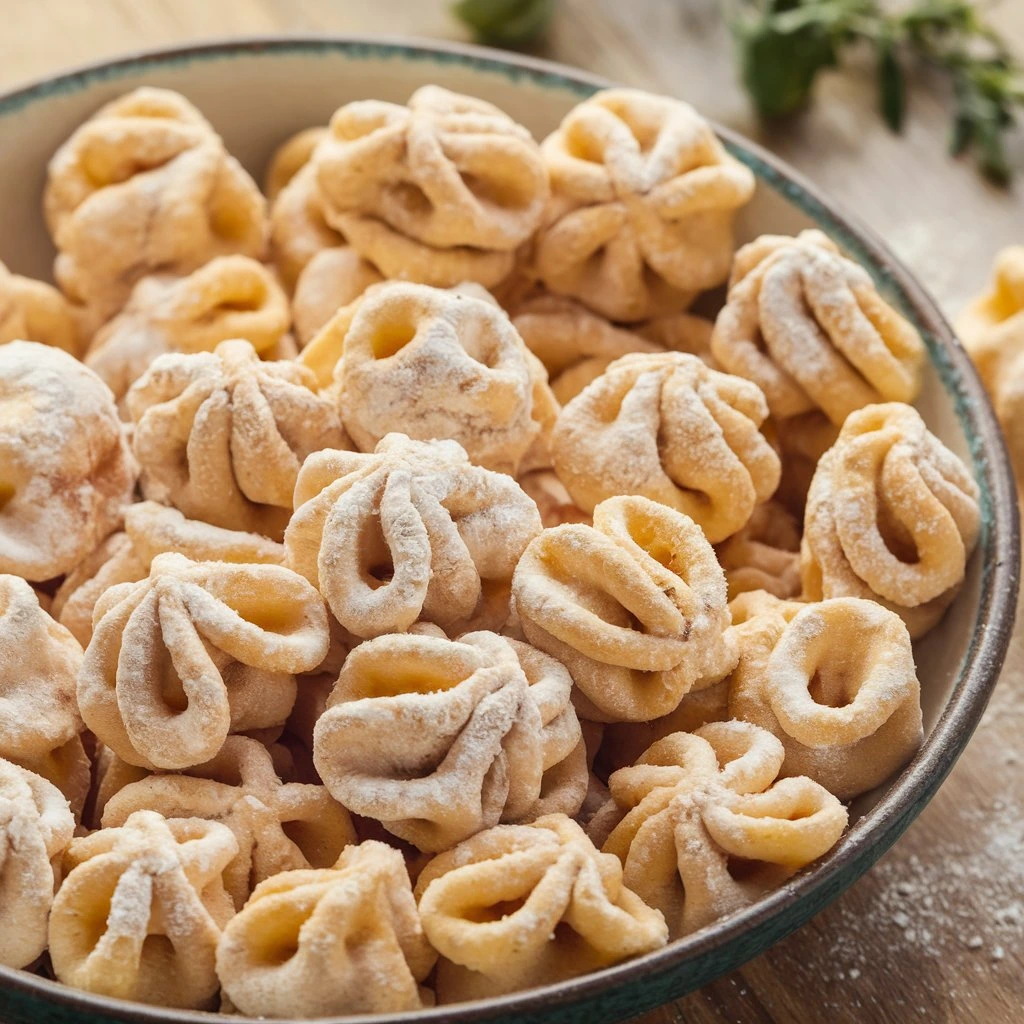
Cavatelli is a classic Italian pasta known for its small, hollowed-out shape and grooved texture. This pasta gets its name from the Italian word cavare, meaning “to hollow out,” perfectly describing its unique structure designed to hold sauces.
This traditional pasta has its roots in southern Italy, where it has been a staple for generations. Often made with simple ingredients like semolina flour and water, cavatelli represents the ingenuity of Italian cuisine. For those interested in experimenting with different ingredients, consider using alternative flours like corn flour for unique textures and flavors (Corn Flour: A Versatile Kitchen Staple).
Cavatelli is not only a culinary delight but also a representation of Italy’s rich pasta-making heritage. Dive deeper into its story by exploring the rich heritage of cavatelli.
The History and Origins of Cavatelli
Where It All Began
Cavatelli originated in southern Italy, particularly in regions like Molise, Abruzzo, and Apulia. Each region developed its variation, with local names reflecting their dialects:
- Molise: Known as cavatieddi or rascatelli.
- Apulia: Called strascinati.
- Sicily: Referred to as cavasuneddi.
Cultural Significance
This pasta was historically made for special occasions and family gatherings. Its simplicity made it accessible to all social classes, and its ability to hold sauces ensured a satisfying meal.
How to Make Cavatelli
Making cavatelli is a rewarding experience that connects you to its Italian roots.
Ingredients
- 2 cups semolina flour
- ¾ cup warm water
- A pinch of salt (optional)
Method
- Combine the flour and water to form a pliable dough.
- Knead the dough for 8–10 minutes, then let it rest for 30 minutes.
- Roll the dough into thin ropes and cut into small pieces.
- Use your fingers or a grooved board to shape each piece, creating the hollow center.
- Cook in salted boiling water until the pasta floats to the surface (about 3–5 minutes).
Pairing Cavatelli with Sauces
Traditional Pairings
Cavatelli is incredibly versatile, pairing beautifully with a variety of sauces:
- Broccoli Rabe and Garlic: A simple yet flavorful southern Italian classic.
- Seafood Sauces: Popular in coastal regions, paired with clams or shrimp.
- Spinach-Based Sauces: Creamy or sautéed spinach pairs wonderfully with the texture of cavatelli. Learn more about spinach-based sauces that pair well with cavatelli.
Modern Garnishes
Contemporary chefs are experimenting with toppings like pistachios to add texture and flavor. To explore the benefits and uses of this nut, check out pistachios as a unique topping for cavatelli.
FAQs
What is the literal meaning of cavatelli?
The word cavatelli is derived from cavare, meaning “to hollow out,” a reference to its unique shape.
Can cavatelli be made gluten-free?
Yes, gluten-free flours such as chickpea or almond flour can be used as a substitute for semolina.
What is the best sauce for cavatelli?
Traditional pairings include garlic and broccoli rabe, tomato-based sauces, and creamy spinach sauces.
Conclusion
Cavatelli is more than just pasta; it’s a culinary and cultural treasure. From its origins in southern Italy to its modern interpretations, cavatelli continues to be celebrated worldwide. Whether you’re making it by hand or experimenting with unique toppings like pistachios, this pasta offers endless possibilities.
Bring a taste of Italy into your kitchen by trying homemade cavatelli, and enjoy the connection to tradition with every bite.
